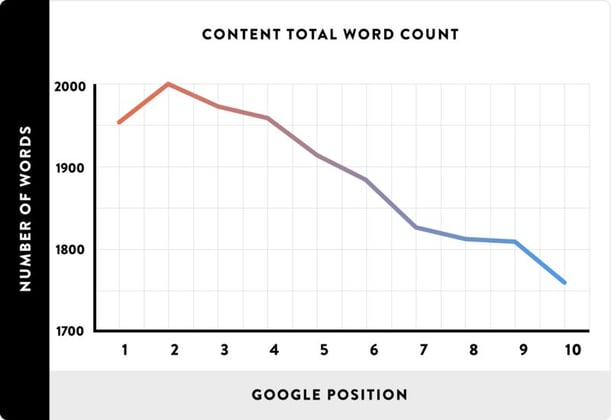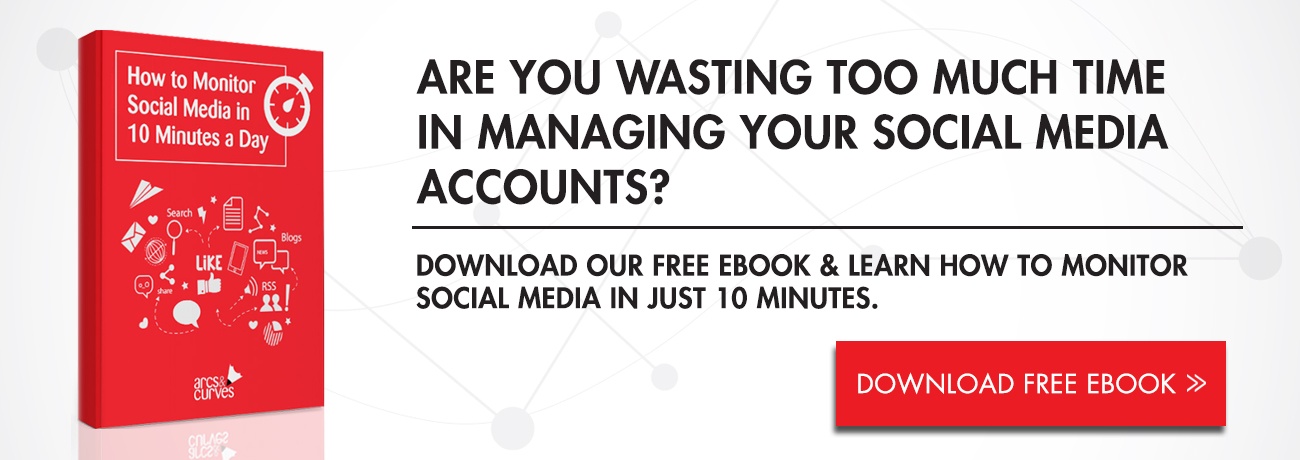
With all the hype about companies going digital and spending more time and effort on taking care of their digital presence, it’s natural for you to feel the same about your business. Have you started worrying about the steps involved and the components of digital marketing? Would you also like to try your hand at promoting your business online? (after all, you know it better than anyone else). If that’s the case, then you’re in the right place.
So without further ado, here’s everything you need to know about getting started with digital marketing and creating your first online strategy.
So what exactly is Digital Marketing?
“Digital Marketing simply means marketing your brand using the internet and digital media as the medium”
What are the components of a good digital marketing strategy?
Before investing all your energy in getting started with the strategising process, take a step back to understand the platforms and the checkpoints you need to pass through in order to start seeing a rise in your website traffic graph.
Here’s a list of everything you need to keep in mind for your strategy creation.
1. Website design;
2. Blog;
3. Search Engine Optimisation;
4. Email Marketing;
5. Social Media presence;
6. Analytics;
The above elements are the major players in your digital marketing strategy. Tackling each component in the right way, will grow your business’ online presence exponentially.
In case you’re getting overwhelmed by amount of work involved, just take a deep breath and relax. All it requires is having clear objectives, planning, generating quality content and regularly monitoring each activity.
The Digital Marketing Strategy Guide - Explained
Here’s a detailed guide which will explain each component, allowing you to take control of your company’s digital exposure and generate more customers.
1) Website Design
Your website is your brand’s online image. The way you create, structure and design the appearance of your website determines the way your brand is perceived to be. Your website should reflect the style, personality and theme of your business - in fact, your website is an extension of your business.
In short, here’s what you need to do!
- Invest in a great website: The user should be able to feel the vibes of your product via the website, even before they actually show up at the premises. Match your website’s theme with your brand image for a more integrated design helping you manage first-time customers’ expectations.
The website should have a responsive design along with an updated Content Management System (CMS) - don't worry, your web developer will know what to do.
Your website should be the right mix of design and functionality to become the perfect contender in the cluttered marketplace, and to leave a lasting impression on each visitor.
Here are 6 essentials of an effective business website that you should aim for, while designing or re-doing your existing one;
- Search Engine Optimise (SEO) your website: Although this is explained in detail as you read along, this component will enable your business to appear in search results. Ranging from the website’s design to choosing the right keywords on it, Search Engine Optimisation (SEO) covers all the areas;
- Website sections: The structure of your website is very important for inbound users because it’ll help them explore and find what they need.
Include sections such as About the product, Brief History, List of services provided, Meet the team, a Blog, Current events/Media exposure and Contact information.
Tyton Media has listed down some powerful website design statistics, one of which is shown below:
By focusing on these sections, you are already catering to the information needs of most of your website users (who are also your potential customers);
- Monitor and update your website: The key factor is to keep your website fresh and up-to-date with content, events, contact numbers, locations etc.
And, in case you’re trying to understand the basics of website design, you can refer to this link. It contains one of the easiest web design tutorials on the internet.
2) Blog:
Anyone can start a blog as long as they have the right content and an audience for it.
A blog section helps your website score higher on search engines, such as Google. Every blog page on your website is an indexed page (which is an addition to the number of total pages on your website).
More blog posts means more website pages. More website pages help you rank higher.
Creating a blog increases your website traffic and online credibility. With the help of an established and updated blog, your brand is perceived to be trust-worthy and authoritative. A blog educates and thrills your users, and thus it’s a very important part of your brand’s identity and trust factor.
While writing your blog, keep SEO in mind because using the right keywords and covering the right topics can get your website considered to be shown on search results without you having to pay for it.
Since you must already be having hundreds of questions in mind, just visit this link for more guidance on how to write a blog that helps you become a profitable brand.
Choose your blog topics wisely, keeping them as relevant to your target audience as possible. You can choose blog topics that are interesting, informative, or helpful to the user.
Here are some great blog ideas to complement your thought process.
A well-known trick to increase your blog's traffic is to write long and content-heavy articles. The simple reason behind this logic is that Google ranks pages higher based on the amount and relevance of content. If your article is in-depth where the word count easily reaches a few thousand, your chances of scoring high are way more than short and fluffy articles.
Here's a chart from Backlinko to prove the effectiveness of long-form articles.

The ability to write long and interesting articles is an art within itself.
So, in order to get inspiration for your next blog article, here's a fantastic guide by Postach.io.
It contains ideas on 7 types of blogs that can gear your website up for search engine success.
3) Search Engine Optimization (SEO):
You have been hearing this term being thrown around quite often.
Well, that’s because of it’s increasing importance in growing a brand online. Your website has no value if it’s not search engine optimised.
If a potential customer is looking for a product, he/she will most likely conduct a google search to find the best and trusted solution for their requirments. In order to be found among thousands of search results, you should get your website optimized.
As mentioned earlier, a responsive design, the right keywords and a growing blog are factors that contribute to a higher ranking among search engines.
Apart from that, you need to focus on a few more parameters that constitute your website’s structure and online strength.
Here’s SEO simplified - just for you:
What is SEO?
Search Engine Optimisation (SEO) is the process of optimizing your website so that it ranks higher in search results, and appears within the top listings whenever a user enters a keyword/s.
This is a chart listing down the major components of a successful SEO strategy.
Ask yourself - "What SEO elements does my website lack in?" Once identified, work on them to give your website the boost it deserves.
-4.jpg?width=751&name=Webp.net-compress-image%20(2)-4.jpg)
Steps involved in SEO:
- Research for keywords: Find keywords related to your industry. These keywords help search engines to “read and identify” your website. The choice of your keywords determine how well your website is treated by Google. Make a list of keywords and incorporate them on your website.
If you need help finding and deciding on keywords, you can use Google’s Keyword Planner or keywordtool.io - these tools will identify and suggest the most relevant keywords for your industry;
- Use those keywords in your website’s page URL: Google and other search engines go through the text in your website’s URL to read and understand your website. By placing these keywords in your URL, your page is optimised for search results.
An example of this would be: If you create a blog post containing tips and tricks for using your product, your URL could look something like this: www.product.com/tips-and-tricks;
- Incorporate selected keywords in your page’s title tags, meta tags, and heading tags:
Title tags can simply be described as the name of your webpage. It’s the text on top of the dialog box when you open an internet browser. You should use the right words for each page, so that the relevancy-to-content ratio increases.
Avoid stop words such as “a, if, the, then, and, an, to, etc” and keep it less than 65 characters for the best preview (without the text getting cut off).
Example of an ideal title tag for the blog page: “Business Name” Dubai - Highest rated online store | Blog
Meta tags: When you look up for something on Google, the search results display many pages. The small paragraph under each page name is the meta description. It is used to describe your brand in short making it easier for the user to quickly skim through all the results.
The ideal way to draft a meta description is to use 1 - 3 most important keywords for that particular page and keeping it lesser than 230 characters.
Heading tags are a part of the web page code in HTML. They are defined by H1 to H6 tags (where H1 is the most important and the largest heading on your page). While designing and updating content on your website, you should use the top keywords in the heading tag.
- Write content for the page with the keywords in mind: Your keywords are your page’s identity. Google’s search algorithm grants a better rank to pages with strategically placed keywords. Considering this fact, use keywords in the pages’ content and use them in the first paragraph.
Be careful not to stuff your pages with keywords, because Google will then recognize it as spam and penalize your website. Therefore, align your content around your keywords but in a controlled manner. For every 100 words on your page, the main keyword for that very page should appear around 4 times.
We have simplified On-page SEO for websites in our 12 On-page SEO elements guide.
For an even more detailed and comprehensive guide for your website’s SEO, check out The Beginner's Guide to SEO by Moz.
4) Email Marketing:
Yes, it still does work. That’s the answer to the question in your head, whether email marketing still works in today’s times.
Ascend2, a marketing technology trends analyst states that “Email marketing technology is used by 82% of B2B and B2C companies”.
Why would you want to lose out on your share of business?
Incorporating email marketing in your strategy is a great way to keep customers informed about the latest developments in your business and industry.
Emails can be used to either promote your current offers, provide valuable content and build relationship with your audience. It is a very easy and trackable way of marketing due to the amount of email tracking tools at your disposal. Email Marketing is very flexible and controllable - you can create custom lists with tailor made content for each for better reach and relevancy.
Email marketing involves the following steps:
- Choosing an email client such as Aweber or Mailchimp;
- Creating a contacts database;
- Determining the purpose of the email campaign and the information to be relayed;
- Maintaining a clean, recognisable and simple-to-use email template;
- Testing effectiveness of emails by conducting test runs among a segregated contact list;
- Focusing on the subject line and copy for maximum readability;
- Launch the email campaign and monitor results;
This guide from Hubspot will take you through each step in a more detailed fashion in case you’re looking to educate yourself further on this topic.
5) Social media presence:
With the massive and continuous growth of social media in this region, it is, hands down, the most powerful digital marketing tool for promoting your business. The amount of flexibility and creativity involved in this medium is limitless. You can create online communities and communicate with them regularly via various social networks.
Here's a great illustration that shows how social media has replaced the traditional means of communication and entertainment.

To get started with social media marketing, here’s what you can do:
- Create an account: Use the same username to maintain uniformity across platforms. Fill up the “about” page sections with content relevant to your brand including details like product information, location and contact number.
The top social media networks are Facebook, Twitter, Instagram, LinkedIn & Google+ with Snapchat growing rapidly in the online ecosystem;
- Hashtags: Create a few unique hashtags for your business and use them in conjunction with well established and industry-famous hashtags to gain traction and organic followers. The key factor here is to get noticed within communities who are using trending hashtags intensively;
- Create content: Your pages need content, so create it. The best person who knows about your product and business is YOU. Use a combination of pictures and videos about your brand. In addition to that, it’s highly recommended that you promote your blog articles, post helpful infographics, share content from your customers.
Don’t be too rigid while creating content for your social media pages. Based on the behaviour of your fans, seek a relaxed approach to writing copy and generating ideas for content. The humor, the puns and the grammar are significant contributors to your online personality. Make efforts in creating a unique personality for your business;
- Run online contests and give away prizes: Giving away freebies on the page helps pull in a lot of organic followers while being a massive hit with existing fans. Running regular contests helps you to get word-of-mouth popularity and increased attention from the online public.
For example, if you're in charge of a restaurant's social media marketing, giving away meal vouchers online gives prospective customers a chance try your restaurant for future visits. You never know, one of your contest winners might turn out to be your brand evangelist.
- Cross promote your website on social media and vice versa: Advertise your website on your social media pages, and do the same on your website to maintain a strong fanbase. This helps in increasing web traffic on both sides, thus increasing your SEO credibility.
Use social sharing buttons and link your social media accounts to your websites for a more integrated approach;
- Incorporate paid ads in your campaigns: Facebook and a few other social platforms help you run paid ads to increase followers or boost certain page posts. With the option of segmentation and targeting, it’s easier to run ads among people who are most likely to like your brand.
These paid promotion options are moderately priced, and give your brand an extra push without burning a hole in your wallet (bank account);
6) Analytics:
If there’s no system in place to track performance and monitor digital activity, there’s hardly any scope for growth and attainment of objectives. If you don’t generate reports to compare your brand’s performance, it becomes useless to assign goals for the future because there is no index to measure success.

Therefore, it’s very important to use analytics as intelligence to understand the performance of your digital marketing strategy, and take corrective and follow-up actions.
You can use Google Webmaster Tools and Google Analytics to track the performance of your website. These tools contain detail analysis of every aspect of your website.
For Facebook and Instagram, you can use the Insights feature to measure post reach, and growth in followers.
For Twitter, use Twitter Analytics.
For Google+ use Platform Insights, and for LinkedIn, use LinkedIn Analytics.
Act on the information you receive from these analytics tools, to improve your future strategies.
To learn the nitty-gritty of analytics and how it can affect your online marketing efforts, we recommend Occam's Razor, a top-rated analytics blog run by Avinash Kaushik. Here, you can basically find anything you need to know about digital analytics.
That's about it, when it comes to creating your first digital marketing strategy. Although this is an ever-evolving field, you now have a moderate idea of what digital marketing is made of.
We hope that by now, your digital marketing knowledge has somehow been influenced and you’re in a better position to improve your current marketing efforts for the overall growth of your brand.
Suggested Reading:








